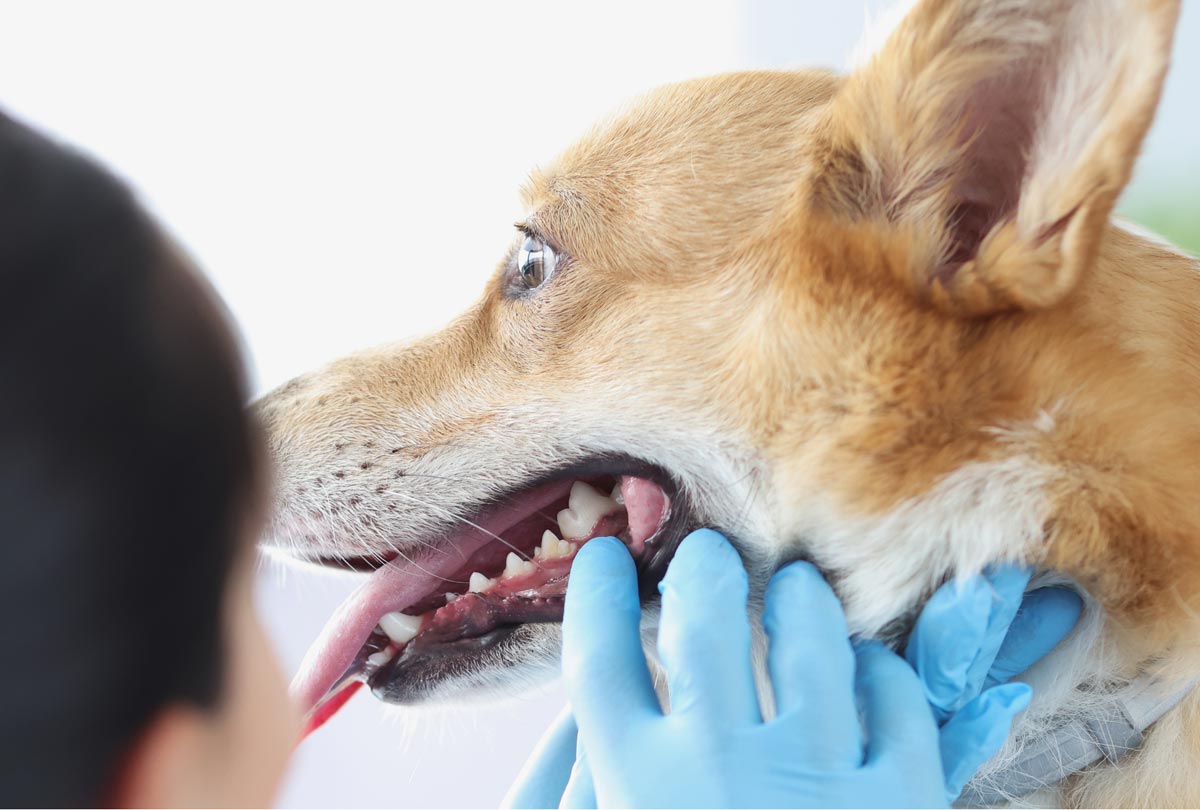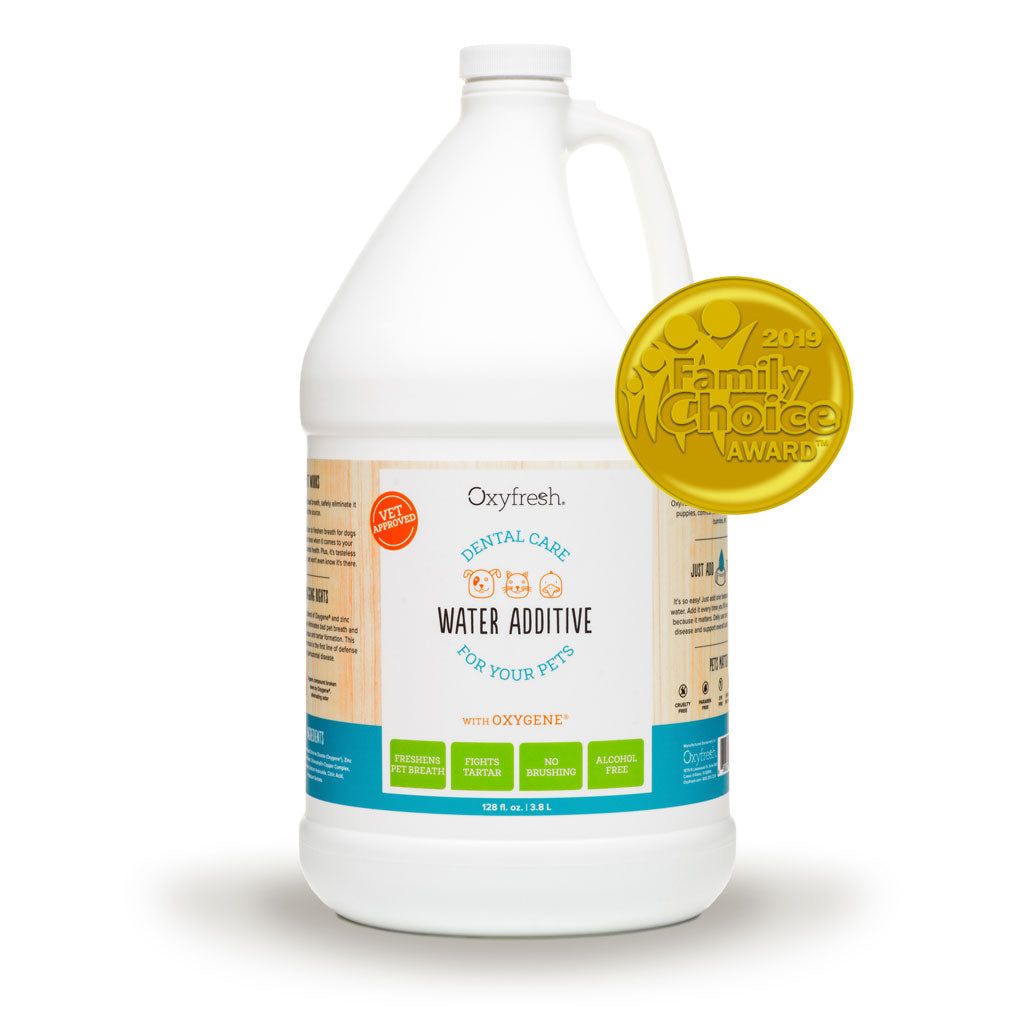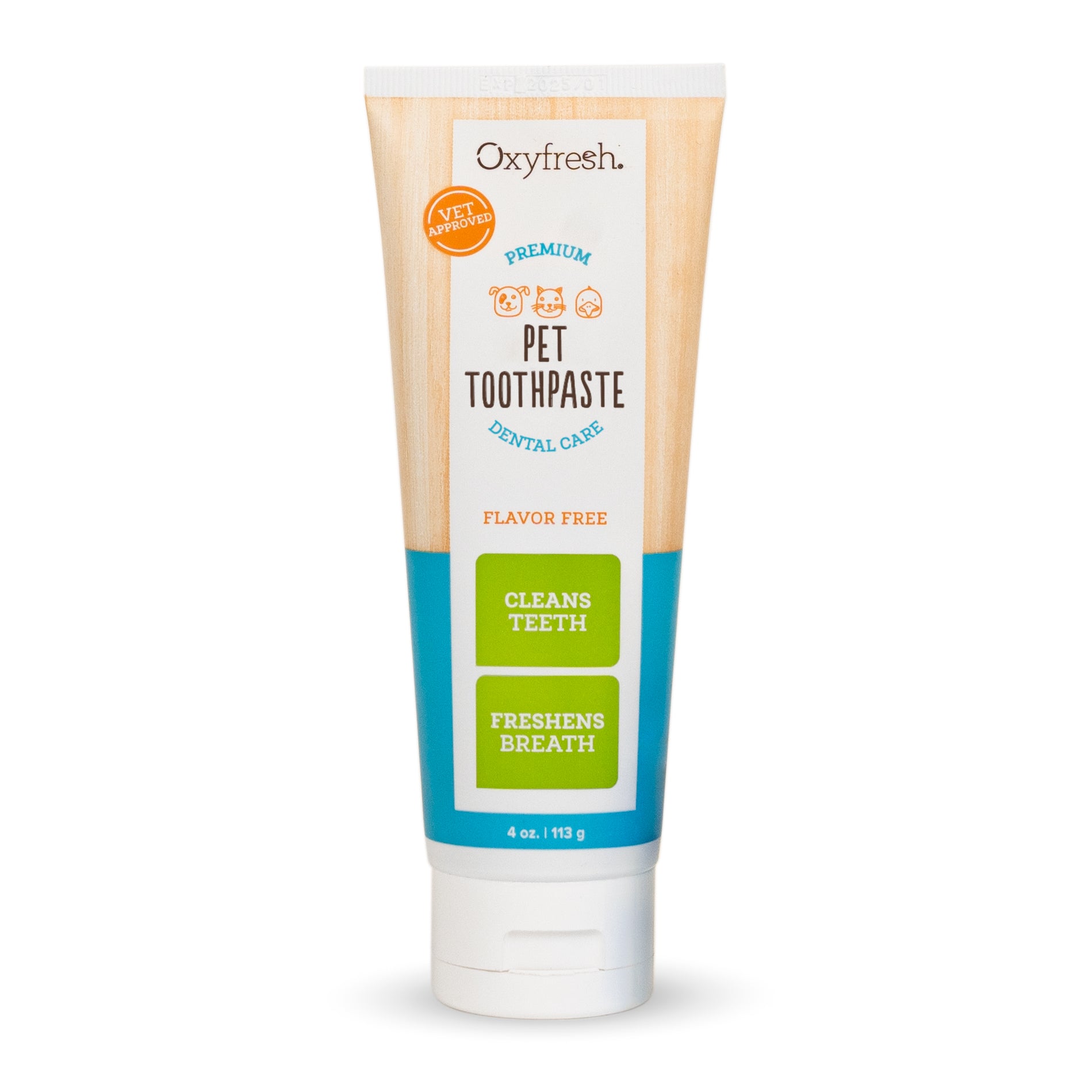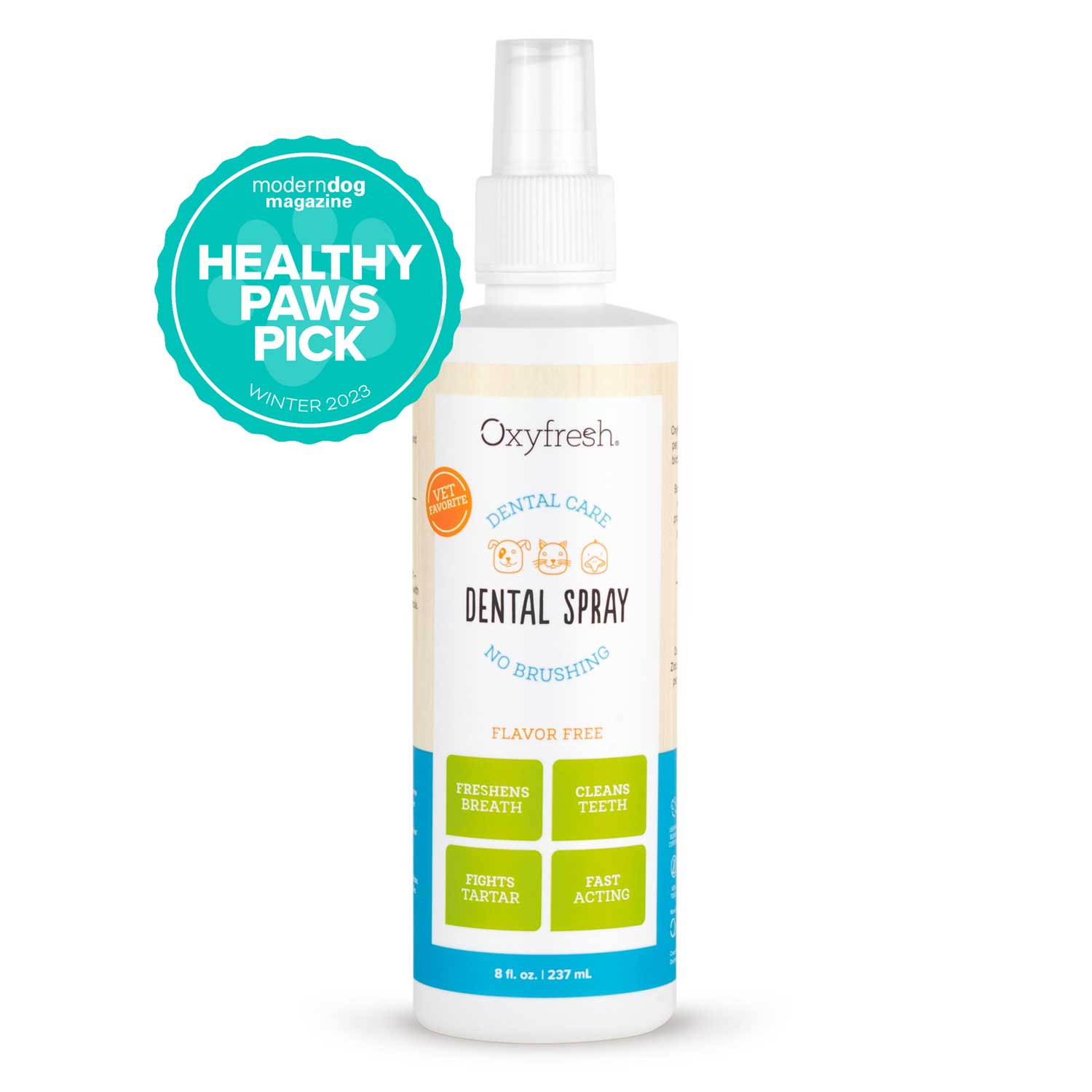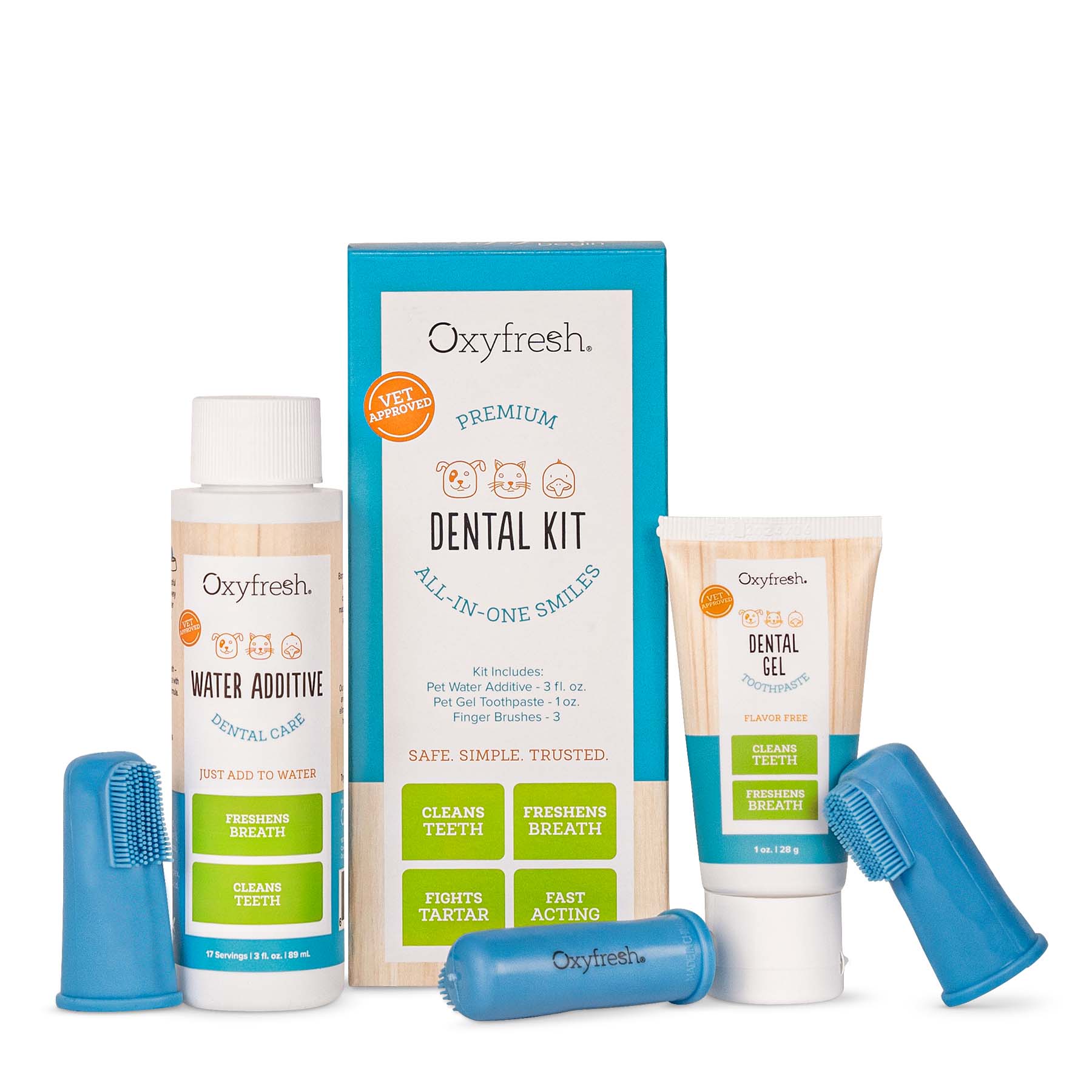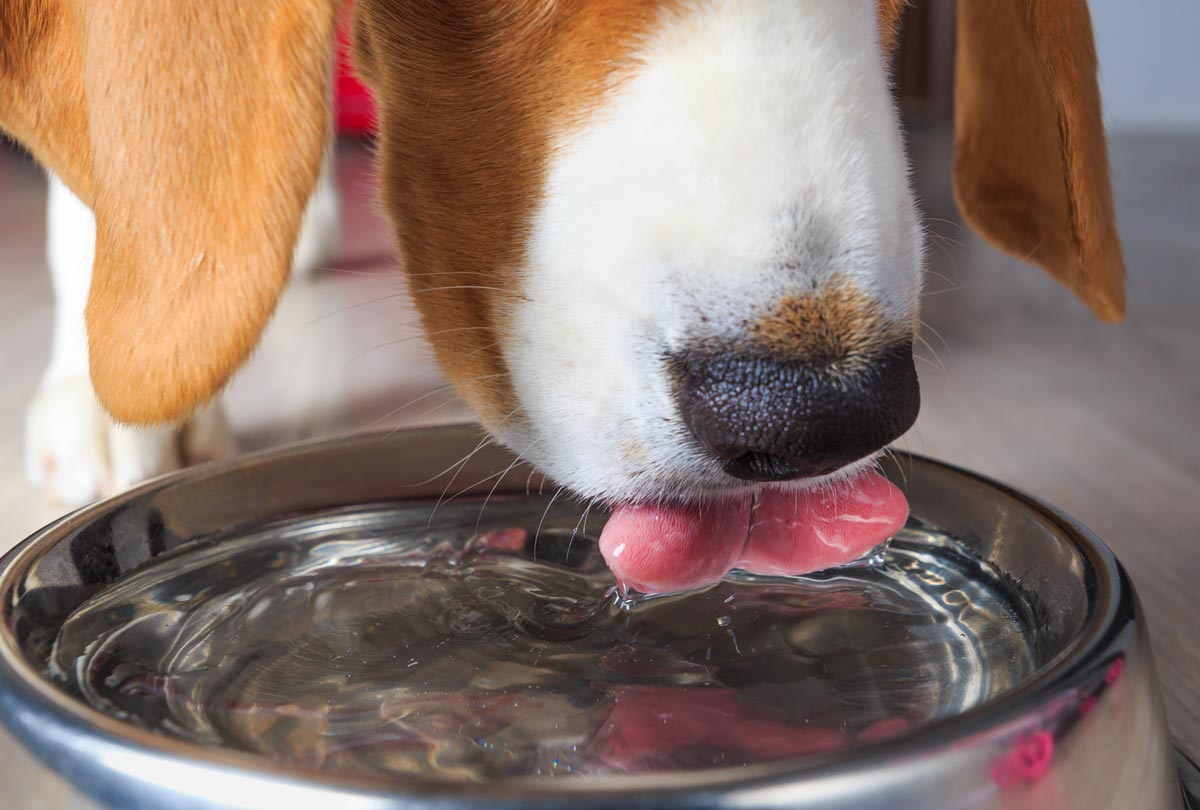If you’ve been giving your dog’s dental care the brush-off, it can cost you! And we’re not just talking about expensive dog dental cleaning procedures.
Poor dental care affects pets’ quality of life and even their lifespans! A dog dental cleaning will help you start with a clean slate, and then by adopting a regular at-home routine, you can potentially save thousands down the road!
Do Dogs Really Need Their Teeth Cleaned?
Yes, dogs really do need their teeth cleaned ... as do any cats in your home! If you don't clean your dog's teeth at home, either by brushing or via a more hands-off method like a water additive or dental spray, plaque and tartar will build up and stick to the teeth. This leads them down the path of gum disease.
When tartar (calculus) gets under the gum line, it causes inflammation and infection ... not to mention that tell-tale bad dog breath. Avoid the mentality of "won’t happen to MY dog!" The truth is that by age two, 80% of dogs (and 70% of cats) have some form of gum disease.
Without intervention, bacteria from infected gums will eat away at the supporting tissue surrounding the teeth. That’s why loose or missing teeth are common in the later stages of gum disease. If this sounds painful, it is, yet sadly, a dog’s instinct is to hide their pain.
Just as concerning, harmful bacteria can spread through the bloodstream, affecting the health of the dog’s heart, kidneys and liver. That's why gum disease is linked to a shorter lifespan. Conversely, dogs who get their teeth cleaned could live two to five years longer!
When should my dog have his first teeth cleaning?
Most dogs will need a professional dental cleaning by age two or three. (Same holds true for cats.) Each year when your pet goes in for shots, the vet should look at their teeth. Dogs who receive dental care at home will need less frequent cleanings and may be able to avoid them altogether.
Keep in mind, smaller dog breeds, because of their crowded teeth, accumulate more plaque and tartar, and will likely need a dental cleaning procedure at some point. If they’re not receiving at-home dental care, they’ll probably need a cleaning once a year, and as you’re about to find out, it’s not cheap!
How Much Is Dental Surgery for Dogs?
The average cost of a dog dental cleaning procedure at the vet is between $500 and $1000. Low-cost veterinary clinics can be a few hundred dollars less, and veterinary dental specialists can be a few hundred dollars more. Pet parents who have pet insurance can also expect to pay less, depending on the coverage they have. (For cats, dental surgery tends to be less expensive across the board.)
The cost of the dental surgery will go up if the dog needs to have tooth extractions (tooth removal). On average, the cost to remove dog’s teeth ranges from $35 to $200 per tooth. And if the dog needs a root canal, it can be as expensive as a root canal for humans ($1000–$3000)!
Why do tooth extractions raise the cost of a dog dental cleaning procedure so significantly? Because it adds to the dental surgery time: that’s added anesthesia, medications, suturing, staff time, etc.
If these numbers are making your jaw drop, the good news is your vet should give you an estimate for how much your dog’s dental surgery will cost before anything is ever done.
Variables that affect the cost of dental surgery for dogs
- Size of your dog: A dog dental cleaning procedure on a smaller dog may cost less because not as much anesthesia is needed.
- Health of your dog: It’s riskier to put senior dogs under anesthesia, and therefore your vet may recommend blood work ahead of time to ensure your dog is healthy enough for dental surgery.
- Progression of periodontal disease: If your dog has severe tartar buildup, it will take more time to remove, increasing the time of dental surgery. If the vet finds other oral health problems like broken or infected teeth during the cleaning, extractions may be needed.
- The city you live in: Just like everything, costs vary depending on where you live. If you live in a city with a high cost of living, the cost to remove dogs’ teeth or clean them will be more.
Dog Dental Cleaning Procedure
A complete dog dental cleaning procedure will generally include the following:
- Preoperative sedation and intravenous (IV) catheter placement
- General anesthesia
- Monitoring vitals throughout the procedure
- Dental X-rays
- Complete oral exam & probe of each tooth to see if there are any problems
- Teeth scaling & polishing
- Informing pet parent of any problems found, and with permission, conducting any extractions, grafting, etc. while the pet is still under anesthesia
What to expect after dog teeth cleaning
Most dogs bounce back quickly after anesthesia, but you should still monitor your pet closely for the first 24 hours post-procedure. If your dog had tooth extractions, they may have some bleeding for a few days. Your vet should give you instructions regarding feeding them soft foods, as well as giving them medications.
Because gum disease and rotten teeth are painful for pets, dog parents usually see a difference right away after their furry friends get a deep cleaning, with the dogs having more energy and spring in their step. That makes the cost to clean or remove dog teeth so worth it!
Is Dog Teeth Cleaning Without Anesthesia Possible?
Be wary of places that offer anesthesia-free dog teeth cleaning. This can be traumatic for the pet and not provide them with adequate or effective tartar removal. Without anesthesia, the only tartar that can be removed is what’s visible above the gumline (assuming the pet cooperates). But it’s the tartar under the gumline and between the teeth that pose the most problems for pets. So if no anesthesia sounds too good to be true regarding your dog’s dental cleaning procedure, it probably is. Both the American Veterinary Medical Association and the American Animal Hospital Association advise against anesthesia- free dog teeth cleaning.
What to Do at Home to Avoid Expensive Dog Dental Surgeries
Brushing your dog’s teeth is the best thing you can do to avoid gum disease and the need for expensive dental surgeries for dogs. The important thing is to be consistent. If you brush your dog’s teeth less than three times a week, you won’t see benefits. To make tooth brushing easier for both you and your dog, follow these helpful tips:
- Brush when your dog is tired and relaxed.
- Aim for a few seconds when you’re first starting out ... you can build up your time as your dog gets used to it.
- Just focus on the outside teeth, using gentle, circular strokes – that’s where plaque and tartar accumulate. Don’t forget the gumline!
- Calmly praise your pet during tooth brushing.
- Give a treat afterward, even if it didn’t go smoothly, so your dog builds a positive association with brushing.
- Use a flavor-free dog toothpaste (that way they won’t try and chew the brush or your finger).
- Use a finger brush versus a handled toothbrush ... it’s easier to maneuver in the dog’s mouth, especially if you have a small dog.
Best Alternative to Pet Tooth Brushing
Dog toothbrushing is not for everyone ... in fact, only 7% of dog parents brush their pooch’s teeth daily. But you can still get similar benefits without the time or drama by giving your dog a quality dental water additive. As the name suggests, you just add it into their water bowl each day. No brush, no fuss!
Oxyfresh USA-made Water Additive is the #1 brand on the market because it WORKS. Formulated with proprietary Oxygene®, this safe, non-toxic purifier oxidizes the bacteria that cause plaque and bad dog breath, making it an essential defense against tartar buildup and gum disease. Best of all, dogs don’t even know it’s in their water bowl because it’s 100% free of flavors and scents. No strange mint, green tea or poultry flavors like you'll find in other water additives. Pets love it!
If you want to do more for your dog’s dental health and potentially your wallet, add this water additive into your daily routine, ASAP. And don’t forget to keep those yearly checkups. They can keep little problems from turning into big (expensive) problems!

